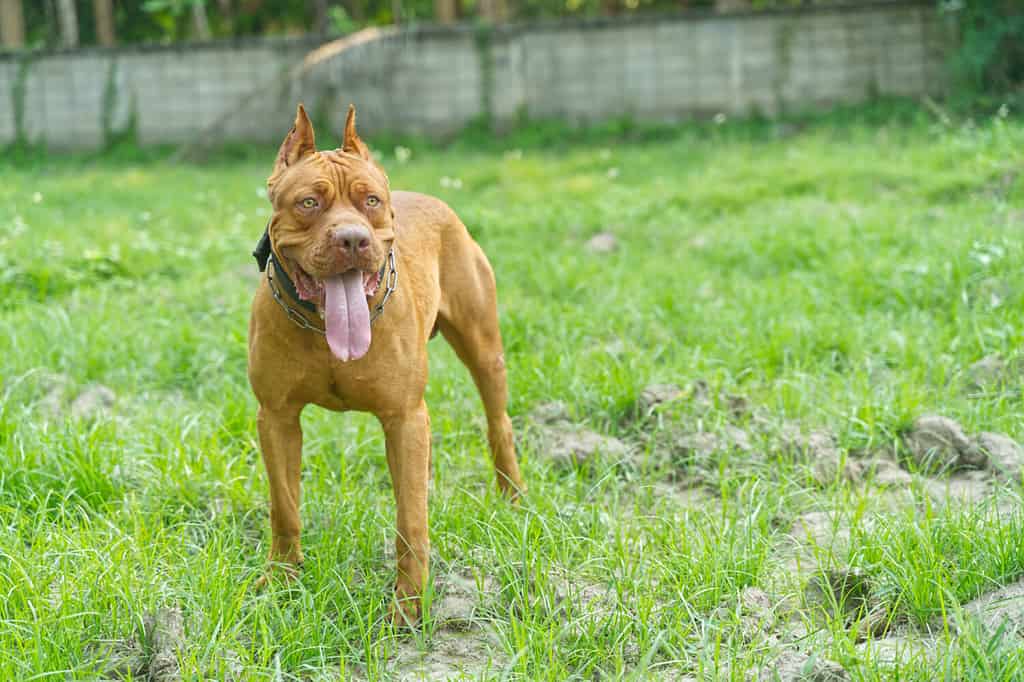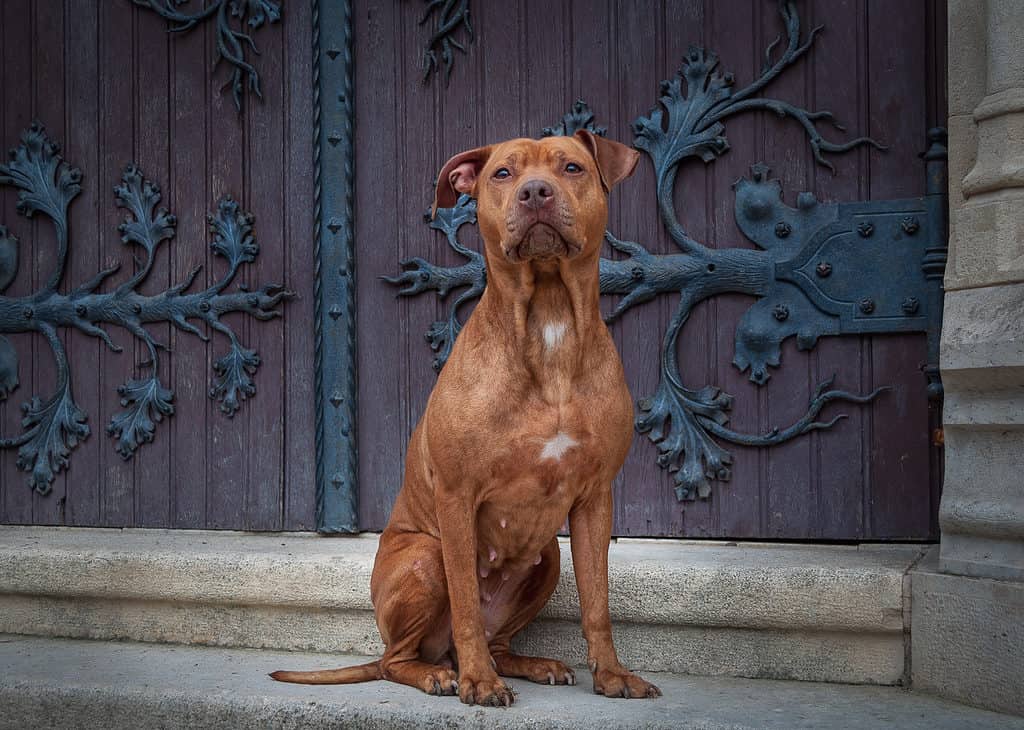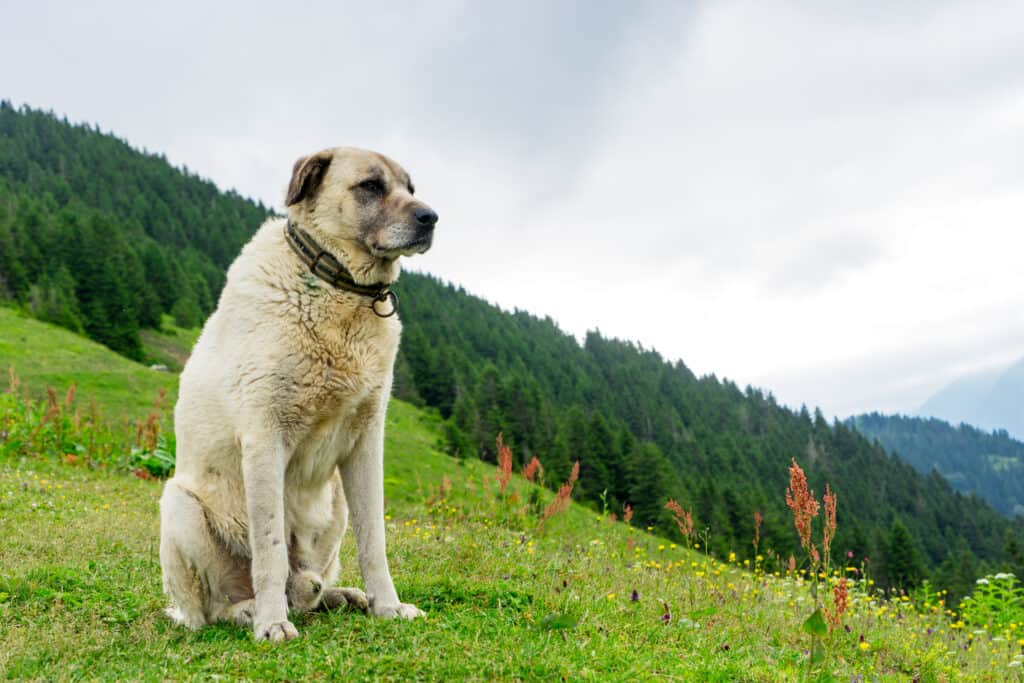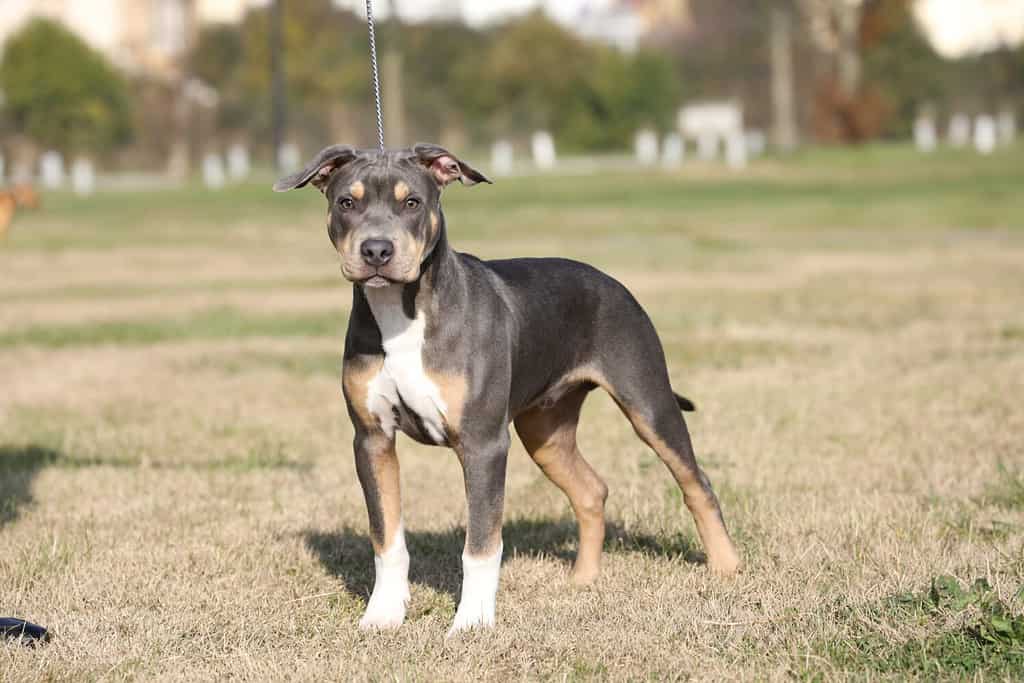When you wish to pick one dog breed over another, it’s essential to explore their fundamental differences. Go for a dog breed whose needs you can effectively manage and create the ideal environment for their growth.
Many people looking for pet dogs look at Kangal shepherds or pit bulls. However, each breed is distinct in its own right. Both species have different temperaments, socialization characteristics, physical traits, and disease susceptibility.
It’s always best to examine these differences to get valuable insights into which breed fits your lifestyle and preferences. This article explains these differences and unravels the factors that make each breed exceptional.
Breed Origins
The breed comes from different locations around the globe. Let’s explore the origins.
Pit Bulls
“Pit bull’ is an umbrella name that covers several smaller dog breeds from the same genetic family. It includes popular breeds like the American pit bull terrier, the Staffordshire bull terrier, and the American Staffordshire terrier. These breeds originated in the United Kingdom. They were initially bred for baiting bulls (hence the name ‘pit bull’) and dog fighting.
Breeders crossbred English bulldogs and terriers to enhance their tenacity, strength, and agility. Bulldogs provided courage and strength, while terriers provided agility. British immigrants came with the breed to the regions they visited.
Kangal Shepherds
This dog breed is also called the Anatolian or Kangal dog. They originate from a region called Sivals (which is part of modern-day Turkey). The nomadic people of this area bred them to work as guard dogs. These dogs kept watch against local predators like bears and wolves.

Kangal shepherds, also known as Anatolian or Kangal dogs, have a rich history rooted in the Sivas region of Turkey.
©Halit Omer/Shutterstock.com
Size and Appearances
One of the key differences is in their size and physical appearance. Pit bulls are generally medium-sized dogs that look pretty muscular. Their average weight is between 13 and 27 kg (60 pounds). When standing, they measure about 43 to 53 cm (about 17 to 21 inches) at the shoulder. They come in various colors and have a short coat.
On the other hand, Kangals are larger and more muscular, giving them a bigger structure when compared to pit bulls. They weigh about 41 to 66 kg. While standing, they are about 71 to 81 cm (28 to 32 inches) at the shoulder. This breed has a thick double coat that is tan to light tan.
Behavior and Temperament
As explained about their breeding, pit bulls are strong and have high energy levels. They are also loyal to their owners. However, they have a strong affinity for being aggressive, a trait they received from their ancestors. Therefore, it’s important to give proper socialization, care, and training if you plan to keep one as a family pet. Only then can they be affectionate, friendly, and good family pets.
Kangals are independent, intelligent, and protective. This trait helped them guard livestock when left alone in the fields or at night. The same instinct makes them protective of their families. They are gentle and calm around the family. However, they are wary of strangers and may get aggressive to protect their owners.
Remember, temperament in dogs is also influenced by the environment and training. Check the background of the dog you wish to rear so that you are sure about its character and behavior around people.

Pit bulls, known for their strength and energy, can be loyal companions. However, due to their ancestry, they may have a propensity for aggression.
©KruBeer Photo/Shutterstock.com
Working Abilities
Originally, pit bulls were meant to be bull-baiting and hunting dogs. They were also family dogs that stayed around their owners. This makes them versatile dogs for guarding, companionship, and play partners. They are good at obeying commands, working faster, and weight-pulling.
On the other hand, Kangals are primarily working dogs that excel in the open fields. They are better at guarding due to their ancestral instinct. These dogs are also capable of confronting predators and strangers alike. People love them for their bravery, loyalty, and endurance.
Overall, both breeds are excellent guard dogs. However, they all need proper training and socialization to fit such roles.
Exercise and Activity
As explained above, pit bulls are muscular bulls with lots of energy. They need regular exercise to be physically and mentally stimulated. Owners must create time for daily walks, interactive activities, and playtime. If they do not get adequate exercise, they may have pent-up energy that may give rise to behavioral problems and increased aggressiveness.
Kangal dogs are pretty active, even when they do not have a regular exercise routine. Therefore, they need moderate exercise to get by. They have far lower energy levels, which you can quickly satisfy with daily walks. If you have a larger compound, create a well-fenced area for them to patrol and roam. They will like it!
The Ability to Get Trained
Pit bulls are intelligent and loyal. They also work hard to please their owners. These characteristics make them good candidates for training. If they get quality reinforcement training consistently and with firm but gentle guidance, they become good at learning new skills. However, look out for pit bulls that exhibit independent thinking, as they may be stubborn.
While Kangals are intelligent dogs, they are quite independent. This trait comes from their guarding activities. Unfortunately, this characteristic can make them hard to train. They have such a firm will that owners must be patient in their training. It is also worth considering an experienced dog trainer who knows of firmer and more consistent training methods.

Kangal shepherds, although intelligent, possess an independent nature stemming from their guarding instincts. This independence can pose a challenge in training.
©iStock.com/cynoclub
Socialization
Both pit bulls and Kangals are aggressive breeds. They require proper socialization to get along with other people well. Even in this regard, pit bulls are better at socializing and becoming well-rounded and friendly dogs. Owners need to provide early, positive exposure to various animals and people so that the dogs can be comfortable and more accepting in different situations.
Kangal shepherds need more effort. Since they are primarily guard dogs, they are always wary of strangers and other animal species. This instinct can wear out if they do not get early and proper socialization with different stimuli. Socialization needs to be ongoing to help them differentiate everyday situations from real threats. This way, they can exhibit appropriate behavior in unfamiliar situations and people.
Lifespan
The comparisons about lifespan are relative. Individual dog’s lifespan can vary depending on general health, genetics, and the quality of care they get. Proper care, regular veterinary checkups, and nutrition are keys to a long, healthy life.
On average, pit bulls live between 8 and 16 years. They are generally good at adapting to different environments, and their coat is usually good throughout their lifespan. On the other hand, Kangal shepherds live for about 10 to 13 years, a slightly shorter lifespan than pit bulls. There is no specific reason for the shorter lifespan. It is believed that genetics play a more significant role in this.
Need for Grooming
All dogs require some grooming to stay healthy and comfortable. However, the grooming level depends on the coat’s thickness. Here is where the key differences play between these two breeds.
Pit bulls have short coats. This means that they require minimal grooming to get along. This is good news for people who may lack time for regular grooming. The breed needs some regular brushing to remove the loose hair. Occasional bathing is also good, as it keeps the coat healthy and free of pests.
Kangal shepherds need more attention in this regard. They have a thick double layer that requires above-average care. These dogs shed moderate hair across the year. However, they still have a heavy shedding season. They require more aggressive brushing schedules to remove the excess hair and prevent matting. Besides, they would need regular bathing to keep the coat in good shape.

Pit Bulls, with their short coats, are relatively low-maintenance when it comes to grooming. On the other hand, Kangal shepherds have a thick double-layered coat that demands more extensive care.
©Maya K. Photography/Shutterstock.com
Health Considerations
All dogs are prone to different health conditions. Therefore, even as we explore conditions that each breed is prone to, remember that they can catch any disease. Regular checkups and a healthy diet can help deal with most situations.
Pit bulls are generally healthy dogs. They do not get many health problems in their lifetimes since they inherited a robust genetic makeup from their ancestors. However, they’re still prone to a few health issues, such as hip dysplasia, heart disease, and skin conditions.
Kangal shepherds are also a relatively healthy breed. Their robust constitution allows them to deal with various health threats. However, the breed is susceptible to such conditions as bloat (gastric dilatation-volvulus), eyelid abnormalities, and hip dysplasia. A healthy lifestyle, which includes a proper diet and regular exercise, deals with most of these likely conditions.
Legal Restrictions
Most jurisdictions put dog breeds under legal restrictions to preserve the breed or prevent the breed’s undesirable characteristics from harming others. Dog owners should consider these restrictions when deciding which breeds to purchase. In this regard, let’s check out the critical differences between Kangal shepherds and pit bulls.
In many jurisdictions, pit bulls face breed-specific legislation (BSL) due to their history as hunting dogs and aggressive dogs in dog fights. You may find restrictions on ownership and breeding. Other authorities may require the owners to keep them on a leash, even if some other breeds can roam free in restricted areas.
On the other hand, Kangal shepherds don’t face the same level of restrictions as pit bulls. This is because they are not regarded as dangerous. However, you still have to check if there are local laws that impact keeping dogs in your locality. This is because some jurisdictions have specific rules on keeping large guardian dog breeds.

Kangal shepherds generally face fewer restrictions. They are not widely regarded as dangerous breeds. In contrast, pit bulls often encounter breed-specific legislation (BSL).
©iStock.com/klenger
Their Popularity and Availability
You can find a pit bull anywhere that dog keeping is legal. There are reputable breeders across the world that supply these dogs. If there are no breeders, you can still find the breed at rescue organizations and animal shelters around you.
Kangal shepherds are less common than pit bulls. This is because many of the Kangal breeders are in Turkey. It is hard to get a reputable breeder in your area. Consequently, a Kangal may be more expensive than a pit bull, which you can easily get. There are also fewer Kangal trainers. Therefore, you may have to pay more to train one than you would for a pit bull.
Interaction with Children
If you are a family with small kids, you should be careful about the breed you keep at home. Children, unlike adults, do not know the limits of playing with, touching, and petting a dog. A dog that is not docile and child-friendly may injure them as it plays.
Despite their history as aggressive dogs, pit bulls make good family dogs. They form strong bonds with children if you raise and socialize them well. Many owners praise them for their affection and patience with family members. However, you must watch the dog to notice any aggressive behavior.
Kangal shepherds are more protective, and their interaction with children varies widely. They need to know which children are part of the family beforehand. With these, your dog will be tolerant and gentle. However, if your children interact with others in the neighborhood, please ensure their safety.
The dog’s guarding instinct may kick in and cause it to harm the kids. One way to deal with this is to socialize the animal and cause it to develop positive behaviors.
Adaptability
Adaption is the ability to live in different environments without problems. Other parts of the country have varying weather patterns, which may affect the mood and health of your dog. Let’s see how the pit bull fares against the Kangal dog.
Pit bulls are generally good at adapting to different environments and spaces. You can raise one in a house or apartment with ease. They only need you to meet their mental stimulation and exercise needs. This versatility gives them the ability to thrive in varying climates.
On the other hand, Kangal shepherds are bigger breeds. They are better suited for secure environments that are spacious. You should think about their protection and guarding instincts too. This may mean getting a larger yard or keeping it in a rural setting to fulfill this need. The thick double coat offers protection in cold climates. However, it may pose a challenge to the dog in hot and humid areas.

Pit bulls showcase remarkable adaptability, making them suitable for different living spaces. Kangal shepherds, being larger breeds, are better suited for secure and spacious environments.
©Sophia Tr/Shutterstock.com
Vocalization
The volume and instinct to bark are essential when choosing a dog breed. The last thing you want is neighbors or family members to complain about non-stop barking from your beloved dog. Always check why the dog is barking regularly to resolve the underlying problem.
Pit bulls do not bark excessively. They will only bark when they want to communicate a need or if they perceive a threat. The general volume of their barks is not too high to worry about.
On the other hand, Kangal shepherds have a deep bark. As a guardian dog, barking is essential for alerting owners of a threat or deterring potential attackers. They tend to be vocal when they sense danger in their protected location.
PitBull vs. Kangal Shepherd: Which is Better?
Both dog breeds are incredible. They are robust and tenacious, and they make great family companions. However, they differ in their needs and requirements. Despite this, none can be considered better than the others. It all depends on what you need from your dog and the environment where it will be staying.
Remember, training, socialization, and healthcare impact the dog’s health, behavior, and ability to show specific traits. Take time to buy from a reputable breeder or hire a trainer if you find undesirable qualities in your dog.
The photo featured at the top of this post is © Sophia Tr/Shutterstock.com
Ready to discover the top 10 cutest dog breeds in the entire world?
How about the fastest dogs, the largest dogs and those that are -- quite frankly -- just the kindest dogs on the planet? Each day, AZ Animals sends out lists just like this to our thousands of email subscribers. And the best part? It's FREE. Join today by entering your email below.
Thank you for reading! Have some feedback for us? Contact the AZ Animals editorial team.






